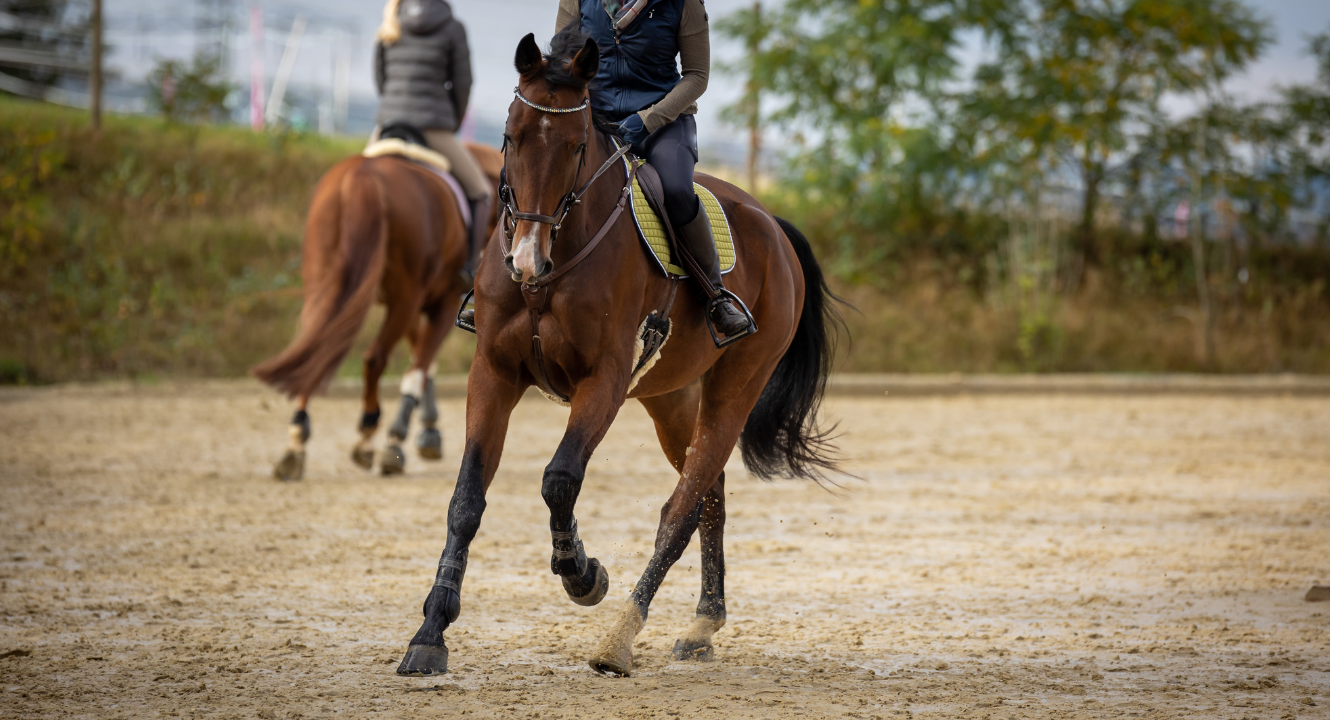
What is the Best Equestrian Surface for a Horse Arena?
When it comes to choosing which equestrian surface to use for your horse arena, there are a few things you need to consider before making your decision. Many variables can influence which equestrian surfaces might be preferable for your horse’s needs and purposes, and it’s vital to be completely aware of why.
In this month’s blog, we will discuss facts you need to consider before choosing a surface for your horse arena regarding the various requirements of different horse disciplines and why one option may be more suitable than another.
Considerations
There are several facts you will need to consider before choosing a horse arena surface. The first of which is purpose.
- Purpose
Depending on what you do with your horse, such as dressage or show jumping, particular surfaces will suit your purposes better than others. For example, show jumping horses will require surfaces with enhanced impact absorption to ensure your horse lands their jumps correctly and doesn’t injure themselves. Alternatively, a dressage horse will need a springy surface to accentuate their movements.
- Frequency of use
Horse arena surfaces naturally deteriorate over time, especially if your horse does a lot of jumping. But depletion will accelerate if you rotate multiple horses in the arena each day. Regardless of the horse disciplines, riding a group in the same space each day will cause the ground to wear down quite quickly, so you should consider the durability of each type of surface before installation.
- Weather
If you have an outdoor horse arena that isn’t sheltered from the elements, you may encounter flooding after heavy rain, freezing in cold temperatures, and drainage issues which can cause the surface to diverge away from its intended state. For this reason, considering the weather conditions your surface is likely to encounter may influence your decision away from a less-suited type of surface.
- Budget
Your budget will affect the type of surface you can buy. Replacing one surface with another can be incredibly expensive, and the upkeep of particular surfaces may deter you from installing them. It is integral to have your budget clearly defined and determine any wiggle room you may have before making a decision.
The different surfaces and their properties
Now we have discussed the things you should consider before choosing a surface, we will talk about the surfaces themselves.
- Dual Stabiliser
Dual Stabiliser is a mixture of pulverised nylon, sand, and rubber flecks. The nylon holds moisture, which is ideal for creating a dense root structure within the main component. The rubber flecks act as tiny cushions that protect the horse and rider from unwanted movement and firmness. Dual Stabiliser is low maintenance and enhances performance, which is perfect for show jumping.
- Combi-Wax
Combi-Wax has been developed exclusively for us here at Combi-Ride. Made of wax, sand, and fibre to promote stability and reduce repetitive strain injuries, Combi-Wax is a perfect wax-based emulsion that stays structured without locking together. It requires very little water and contains little oil content, so it has a far less negative environmental impact. Combi-wax is also ideal for show jumping thanks to its exceedingly stable and low kick-back properties.
- Pre-mixed surfaces
This surface is suitable for all horse disciplines, including dressage, show jumping, and racing gallops. An ideal surface for training on, our pre-mixed surfaces are made of advanced stability fibre, silica sand, and combi-pro to create an optimum riding experience that keeps your horse comfortable during practise.
- Equestrian Sand
When using sand to surface your arenas, premium quality is vital to ensure the best performance for your horses. Here at Combi-Ride, we use high-quality silica sand from Sibelco and Bathgate Silica Sand. The difference between standard and premium sand is the size and shape of the grains, which allows the sand to hold moisture and drain simultaneously as well as holding hoof impact and cushioning your horses.
- Additives
Additives, such as rubber chippings and fibre are materials that help to provide frost protection as well as enhance your horse’s performance in practice and professional events. Fibre provides stability, moisture retention, and a reduction in strain injuries, and rubber has good shock absorbance and is highly responsive to your horse’s movements.

